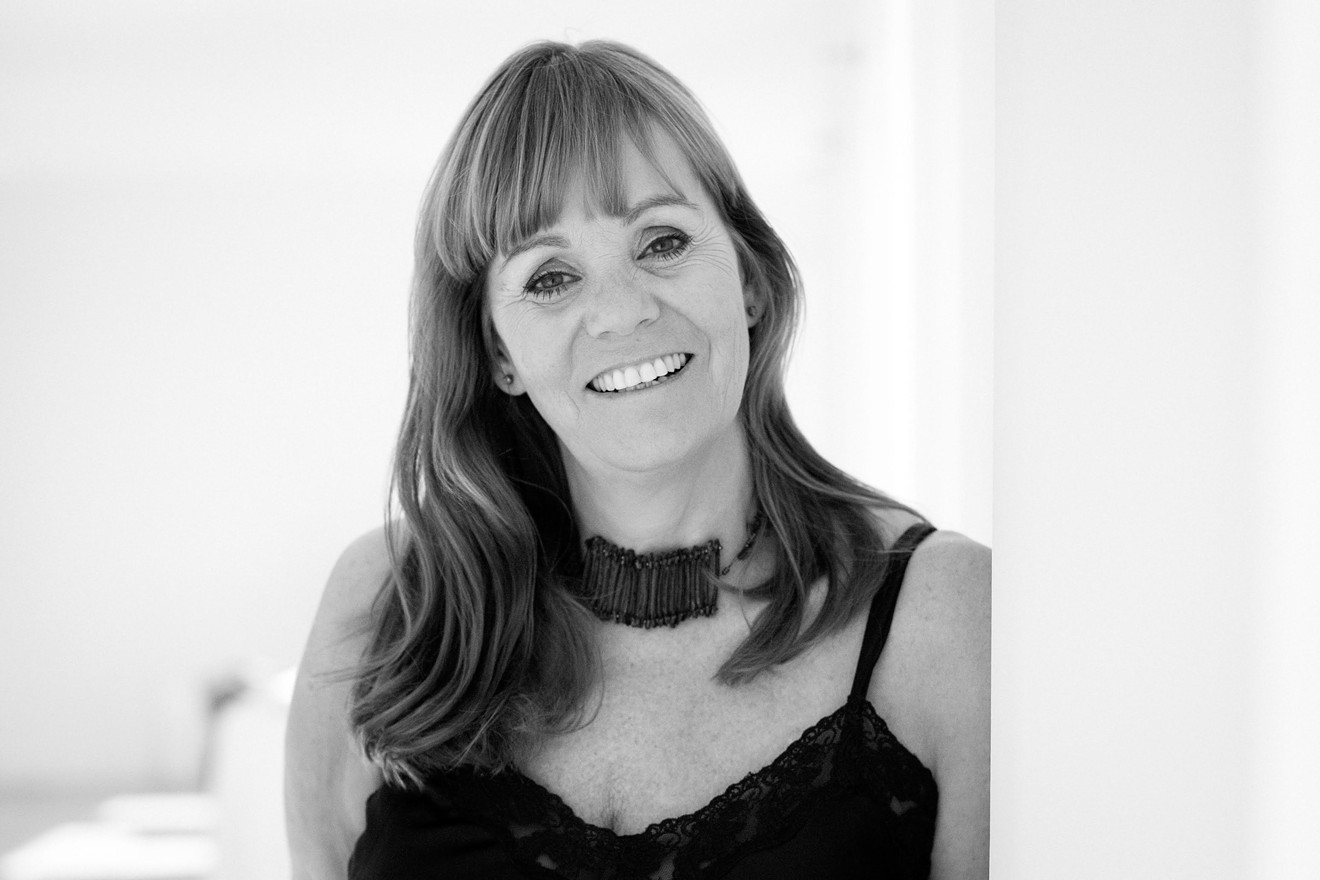That's what Barbara de Vries, a model-turned-fashion designer living in Miami Beach, says she blurted out in a packed elevator as she left the Waldorf Astoria in New York City, where the American Museum of the Moving Image held an event to honor Richard Gere in 2004. Film mogul Harvey Weinstein was standing by the control panel.
De Vries hadn’t seen him since the late '80s, when her friend, British model and actress Lysette Anthony, set her up on a blind date. Anthony told her that she'd admonished Weinstein, who was “nice but a little touchy-feely,” to "keep his hands off" de Vries.
At the time single, de Vries agreed to drinks at Bemelmans Bar and accepted his invitation to see a movie — but Weinstein fell asleep shortly after the projector began running. He snored loudly. Other people in the audience tried to shush him. De Vries bolted.
She has since forgotten what movie was playing, but she clearly remembers spending their two-hour date warding off his advances. “I kept taking his hands off my legs,” she recalls.
In retrospect, the irony isn’t lost on her that Weinstein, the cofounder of Miramax Films — a distribution company behind dozens of highly acclaimed independent films that became popular in mainstream culture — took a snooze at the movies around the same time Miramax released Cinema Paradiso, which won the Oscar for best foreign-language film in 1990. The story of Toto, the mischievous kid in postwar Italy who falls in love with film and becomes a director, touches upon the censorship of sex scenes and recalls the innocence of puppy love.
But one scene, in a Manhattan theater, got creepy. “I had seen Cinema Paradiso. That's why I had an inkling of what he did in the movie business,” de Vries recalls. “I guess I trusted his instinct of what might be a good movie. Little did I know that any movie would do when it's a dark room he was after.
“It ended up being a strange date that I got out of as fast as I could, but this was a power thing for him," she adds. "I think he was so addicted to touching as many women he could in one day.”
De Vries hadn’t thought much about Weinstein since she saw him in the elevator, where, she says, “he got purple in the face” after grumbling a few “indignant” words. The recent scandal that has publicly disgraced Weinstein put him back on her radar.
This past October 5, the New York Times published a bombshell chock full of sexual harassment and rape allegations against the Hollywood heavy-hitter, resulting in backlash and a global "Weinstein effect." Many entertainment industry professionals who’ve come forward have also encouraged women to speak unabashedly about their own sexual harassment experiences. Actress Rose McGowan, whose Twitter account was briefly suspended, rallied troops to join her #RoseArmy, and actress Alyssa Milano emboldened women by reviving the hashtag #MeToo.
When the Weinstein scandal blew up, de Vries took to Facebook to share her story. (Weinstein's publicist did not respond to New Times' requests for comment.)
De Vries' background in modeling exposed her at a tender age to the wiles of men prone to harassment. The Amsterdam native began her fashion career in Paris soon after high school, which led her to further adventures in Australia. The coming-of-age story is the subject of her illustrated book, Stupid Model, where de Vries writes about her younger self as a naive girl who soon got gutsy.
“By the time I met Harvey, I was 32,” she says. “By the end of book, I was 19, well schooled in what to do, what not to do. The book is really a compilation of those experiences. I learned how to stand up for myself.”
De Vries became design director at Calvin Klein not long after her first encounter with Weinstein. After ten years in London, where she designed her own collections, de Vries was hired by Klein to create a collection for Gen X, which became the hugely successful CK brand that launched then-17-year old Kate Moss’ career.
“When I first saw her, I didn't really get it, but Calvin insisted,” de Vries says. “She so was tiny, and all my jean samples came in a size 6, falling below her hips and revealing her underwear. It was kind of sexy, so we used CK underwear, and a whole new trend was born. Now when I see a guy who literally has his pants down his legs, I think, Oh my God, what did we start?”
De Vries, who eventually married a writer and settled in Miami Beach, has long been interested in the subject of women’s roles behind the scenes of powerful men. She runs a Miami-based book publisher with her husband and is penning a memoir of her years at Calvin Klein, The Women Behind Calvin’s Back.

Barbara de Vries modeling from the Barbara de Vries Collection, designed for Outward in 1995.
Patrik Andersson
They still do. “In today's context, it’s called objectification,” she says, “but surely it’s only objectification if the beholder views the woman as an object and not as a human being. We women are the keepers of our boundaries. If some men can’t handle that, they need to learn their place.”
For de Vries, the “Weinstein effect” is about a man who clearly still hasn’t learned to respect women’s boundaries, and he’s not alone. She published Stupid Model, which recounts scenes of sexual harassment, in November of last year, about a month after the Washington Post revealed Donald Trump’s now-infamous “grab 'em by the pussy” line.
“I think the energy of secrecy shifted the moment Trump said what he said on tape, but it was still an outrage that didn’t affect him,” she recalls. “I remember how it was timely for me since my book was a litany of these stories. I hadn’t even considered the context. It was really interesting that all these emotions were triggered again.”
With three daughters — one in college and twins in high school — de Vries sees the Trump-to-Weinstein series of headlines as another reminder of those emotions but also a movement toward more open communication from women.
“We’ve slowly, over the last year, started finding a voice. That’s what led to the Weinstein story — a general shift of feminine energy. At least 60 percent of women in the U.S. now are triggered, aware, and activated,” she says. “Let’s hope that it goes from negative stories to positive stories. Right now, it’s a form of empowerment that’s attached to victimhood. I don’t like that. I think it should be about being empowered. We need to get away from all adjectives men are using. We need to empower each other.”













